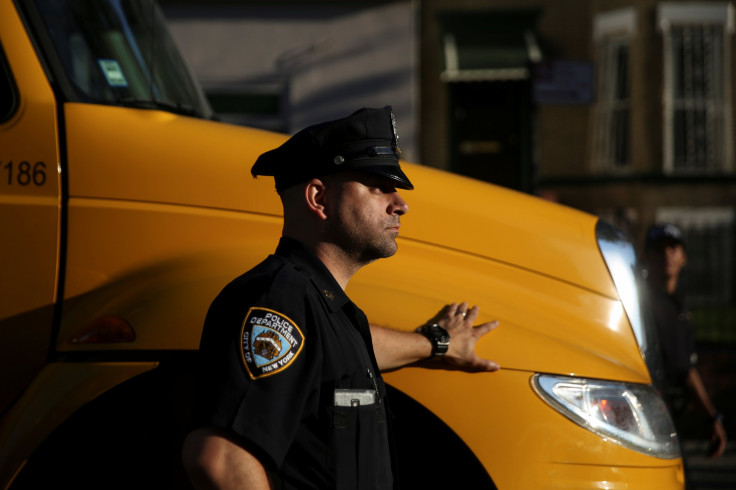WATCH: Police's Bodycam Footage Captures Fatal Shooting Of Knife-Wielding Man

The New New York Police Department on Thursday released the bodycam footage of an encounter with a knife-wielding man with a history of mental illness who was shot fatally in the Bronx.
The shooting that took place Sept.6 was the first deadly encounter captured on the device ever since NYPD officers started wearing them this year.
The video shows two officers instructing the knife-yielding man, Miguel Richards, 31, to drop the weapon as he keeps standing in a corner of the room where the encounter took place.
In the footage, the officers keep repeating to him to put the knife down as they do not want to shoot him.
“Let me see your hand,” Officer Mark Flemming is heard telling Richards in the video, according to ABC News. “Put your hand up, drop that knife. I don’t want to shoot you.”
Throughout the video, Richards was not seen saying anything.
Before firing 16 shots that killed Richards, the officers asked him 44 times to drop the knife and six times to drop a toy gun, which was apparently in his other hand, Chief of Department Carlos Gomez said, ABC News reported.
“It appears that [when] Mr. Richards raises his hand you actually see a red dot emanating from an object in his hand,” Gomez said.
Experts had mixed reactions to the footage, with some even expressing reservations over the release of the footage before the investigation was completed.
John A. Eterno, a professor of criminal justice at Molloy College and a retired New York police captain, defended the officers' attitude during the incident. Eterno said they remained calm and professional during the encounter, the New York Times reported.
However, a lawyer with the New York Civil Liberties Union, Christopher Dunn, questioned the police behavior during the encounter.
Dunn said they acted in a way that made "it almost inevitable that this resulted in the shooting that it did," according to the Times.
Others objected to the release of the footage itself, with some saying it would jeopardize the safety of the personnel involved in the encounter and others saying it compromised the integrity of the ongoing investigation into the incident.
"The release of this footage sets a dangerous precedent that jeopardizes police officers' due process rights and confidentiality protections under state law," Patrolmen's Benevolent Association (PBA) president Patrick Lynch said, according to WABC, an ABC-affiliate.
Lynch further added the release of the video while the district attorney's ongoing investigation was not appropriate. He said that the investigation "should be allowed to proceed free of pressure and interference, looking at all of the relevant facts alongside the video footage."
"Moreover, this footage constitutes a confidential personnel record that is protected under New York State Civil Rights Law Section 50-a, and releasing it in violation of the law will expose the police officers involved to a very real and substantial risk of harassment, reprisals and threats to their safety and the safety of their families. If fairness and justice are the goal, they won't be achieved by suspending police officers' rights whenever it is convenient to do so," Lynch added.
Bronx District Attorney Darcel Clark too objected to the release of the video. Clark said although she supported NYPD Commissioner James O'Neill's decision for maintaining transparency in his work by releasing the footage, releasing of videos during investigation compromised its integrity, WABC reported.
"It is important for everyone to understand that video footage is just one of many tools that are utilized by the Bronx District Attorney's Office to investigate this shooting. It is my position that the footage be released after the investigation is completed," Clark said.
© Copyright IBTimes 2025. All rights reserved.






















